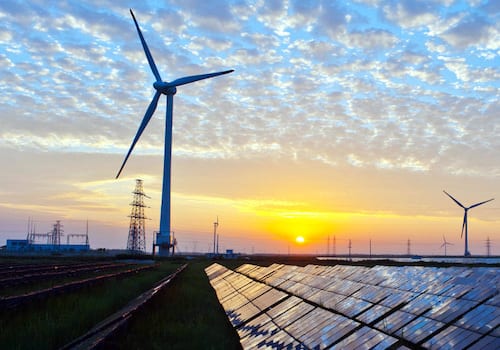The Australian Energy Market Operator has been fretting about the increase in the penetration of rooftop solar for some time now, and perhaps most of all in Western Australia, one of the world’s biggest “stand alone” grids, where the solar uptake is accelerating rapidly.
The state now has more than 1GW of rooftop solar on its main grid, which is located in the south-west corner of the state, and which is known as the South West Interconnected System (SWIS).
That makes rooftop solar the biggest source of electricity by capacity, and the uptake is growing at 35 per cent a year, according to AEMO.
It also has a growing amount of large-scale wind and solar capacity, as construction resumes following a three-year hiatus engineered by the previous Coalition government, and reforms are made that will facilitate access for renewables to the grid.
The isolated nature of the SWIS, both in its physical characteristics and some say in the culture of many in the industry, makes W.A. a fascinating case study.
And rooftop solar is particularly attractive because the west gets gets a lot of sun, and because consumers are finally being asked to pay the true cost of the fossil-fuel based grid, which was hugely subsidised by the government that has decided it can no longer foot the $500 million a year cost of making the electricity bills appear slightly more palatable.
But that rapid switch to rooftop solar is creating a very big “duck” curve that the grid operator is having to learn how to manage, as are others around the world where solar is a growing share of production.
The duck curve relates to the fall in demand in the middle of the day – driven by the uptake of rooftop solar – and the “ramping” needed to catch up with grid demand as it rises quickly as the sun sets in late afternoon, early evening.
The operator says that on October 18 last year, it was forced, for the first time, to call in “backup load following ancillary services” – broadly the equivalent of the directions that AEMO has grown accustomed to issuing in South Australia and more recently Victoria.
The operator said this was the result of volatile wind output, which delivered swings of up to 50MW in short time periods during the morning, compounded by variations of up to 100MW in the output from rooftop solar in the late morning as cloud cover moving across the south-west corner and Perth in particular.
At 11.30am, local time, the operator called on 50MW of Backup LFAS Down and 50MW of Backup LFAS Up, for a period of 3.5 hours to meet what it expected to be a volatile load profile. (More details can be found through the links here).
AEMO says it was justified because – as the arrow is pointing to in the above graph – a band of clouds around 1pm reduced solar PV output and caused a 300MW increase in demand, and its passing caused a 250MW reduction in demand in the next time interval (1.30pm).
The back-up call was not costly – around $36,000 – although a second back-up call, on December 26, at 1am, caused on this occasion by rapid changes in wind output, was imposed for 8.5 hours (35.5MW) and cost around $81,000.
AEMO says the increasing level of penetration of rooftop PV and other renewable generation is going to increase the amount of volatility experienced on the power system going forward, and the number of directions.
AEMO boss Audrey Zibelman addressed this issue at a symposium at UNSW this week, when she said that in Western Australia there is sometimes “too much rooftop solar that is not managed”, causing voltage to drop at a distribution level, and leading to curtailment of rooftop solar output.
“We have to start introducing the solutions now to make sure it works – otherwise we will be in the unenviable position of saying we can’t do any more,” Zibelman said.
Those solutions include a shift to “orchestration”, which will allow networks owners and grid operators to use smart inverters to help manage distributed solar output. Battery storage, demand management and aggregated systems through smart controls of devices such as pool pumps could also do the trick.
“We want to be able to use all these investment, in a way to provide a private benefit and a public benefit and integrate then into the system,” Zibelman said. “It’s important for markets to be able to reward people to do that so that they are getting payments for the service. We have to get cracking.”












